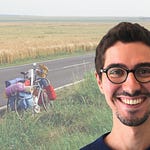All of us in the life sciences are in the business of making the world healthier. The instruments and reagents we sell and the technologies and therapies that result save lives.
A scientist (after a lot of research) will look at a disease or problem and say, “I think I can find a way to fix that.”
Can we, as an industry, look at trade shows like a scientist would, and ask, “How can we do this better and stick to our mission of making the world at least less sick if not healthier?”
If you’ve been with me for a while, you know I have a love-hate relationship with trade shows. When I was a MarCom director, events were by far the biggest part of my budget. I imagined all the other awesome campaigns I could execute with that money. And then there is the waste. The stuff that ends up in the hotel trash before you get back on the plane and the shipping of huge amounts of equipment all over the world.
On the other hand, if a lot of customers are going to be in one place at the same time… it makes sense to take your offering to them. And human connection is important.
I know it’s important because this episode came out of my trip to ADLM, the event formerly known as AACC.
Stuart Warrington is the CEO of Envoke. They create virtual demos to make your instruments accessible at more events and present a consistent story across the customer journey. More on that below.
Stuart is a filmmaker. He has been created videos for the likes of Thermo and Bio-Rad. Videos used to have a longer useful lifespan. Then his customers wanted new content at a faster pace that was more engaging. Stuart suggested video games.
“No. That’s not it.”
“How about a virtual demo?
“Yes!”
It turns out those are basically the same thing just packaged differently. (They are both virtual experiences that tell a story with the user as the hero.) Stories are the key here. (The crowd cheers.)
People need to tell their own story, right? And sales and training and all that is about that. It's like, how can I communicate the message of what this thing does in the most accurate possible way? And you need to give people freedom to craft that story. And that's why we do things the way we do them.
We make this story block library and it's loads of little clips. And in each clip tells its own individual message. And then your user, your sales rep, your engineer, your trainer can take from that library and craft this story. It might be about a really specific bit of qPCR on the qPCR devices in the platform. And you know your customer only really cares about that. So we give you the opportunity to just pull those bits in and tell a story that is about your product with your product rather than PowerPoint presentations and brochures and videos and things like that. It just takes that to a slightly higher level and it also then starts saving you loads of money on shipping. Right?
The result is that consistent experience for the user from the web to sales to training to maintenance and service. We talked about training people the same way pilots train. On a simulation. They can make mistakes without breaking an expensive piece of kit.
Not subscribed yet? It would mean a lot to me.
Thanks for spending some time here, either way.
In addition to the contribution to sustainability without shipping products, the ability to customize a story improves the sales process.
So one of our customers built a storyline for the event from the story block library. So they built something that was like, this is what we want to talk about. This is the story we're telling here. But then what it also did was they put on a QR code, so that you scan the QR code as your customer, and what you do is, you walk away with a different storyline that's specific for you, that's just about the thing that you were talking to him about.
It's all come from the same place, we've just pitched it slightly differently. So it's all come from that story block library, we've just created specific storylines for different environments. And one of those environments is, “I need something a little bit better to take away and show to my boss.” And they take, they scan the QR code, they get their demo, and it's just for them, it's tailored for them, and they walk away and they show their boss, and it's a path to sales, right?
This sounds better than walking away with a PDF or printed literature that the boss has no interest in reading.
What is the path to this magical virtual future? For now, Stuart thinks companies will continue to send at least some products to events. The change comes from the bottom up where they no longer send instruments to smaller shows or remote locations.
At some point, customers and salespeople see the benefit of this approach and hopefully, we all get more creative about how to use our space at larger events. Instead of bringing one instrument or a few, companies could present their entire catalog or larger configured solutions.
This is only one way that we can improve the trade show experience and get a better return on investment. In an upcoming episode, we talk a little bit about the interactions that happen in the booth and how they can be improved as well.
Your deepest insights are your best branding. I’d love to help you share them. Chat with me about custom content for your life science brand. Or visit my website.
Intro Music stefsax / CC BY 2.5















Share this post